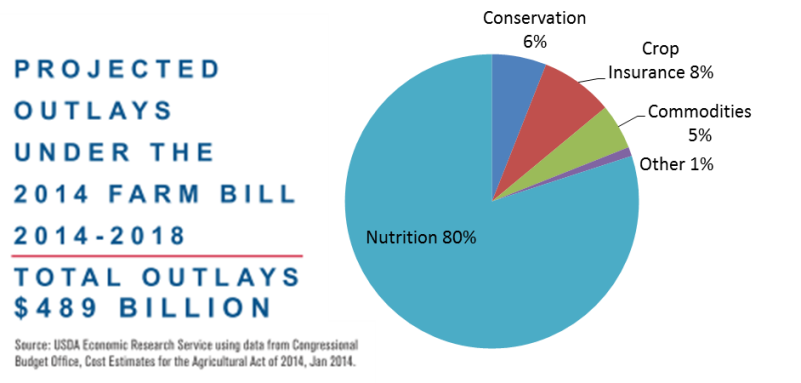The farm bill expired. Now what?
Because our dysfunctional Congress did not pass the farm bill by midnight on Sunday, the 2014 bill has expired.
What does this mean? Basically, the USDA hasn’t decided anything yet but a lot depends on the authorization status of each program (recall: the farm bill covers hundreds of programs).
- Programs with permanent budget authorization—SNAP and Crop Insurance, for example—keep going.
- Programs without authorization—the 40 or so “orphans”—terminate.
- Programs authorized by the farm bills of 1938 and 1949 that have been updated and modernized revert back to the rules for those those years—certain dairy programs are especially affected.
The Congressional Research Service has a quick summary of the implications of the non-passage of the farm bill.
As for why Congress couldn’t get this bill passed, the big barriers are SNAP and conservation.
Recall that SNAP, formerly food stamps, is in the farm bill as a result of classic logrolling in the Johnson era. Johnson got legislators from farm states to vote for food stamps in return for votes from urban legislators for farm supports. At the time, the food stamp program was piloted in 40 counties and 3 cities with a total of under 400,000 participants. Its cost was a fraction of the total farm bill cost.
In 2017, SNAP had more than 42 million participants at a total cost in benefits and administration of $68 billion—nearly 80% of the total cost of the bill.
SNAP looks like a honey pot to legislators looking for funds to make up for the tax cuts. They have proposed additional work requirements.
These are sure to reduce enrollments. Mathematica Policy Research says the House farm bill (HR 2 (115)) would cause 2 million households to lose SNAP eligibility.
Conservation is another issue. Senators write that they cannot support a farm bill that does not promote conservation.
New to the farm bill? Want to find out more?
- Knowable Magazine’s Rachel Ehrenberg explains the farm bill’s role in health (I’m quoted).
- Ehrenberg’s article comes with a wonderfully illustrated timeline.
- The Sustainable Food Center tells you five things you need to know.
- The National Sustainable Agriculture Coalition’s website is the place to go for deep information and analysis.


